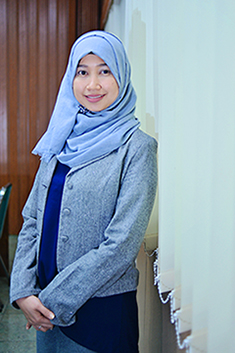Solubilization Inclusion Bodies from Synthetic Recombinant PGA Gene Expressed in E. coli BL21(DE3) by Denaturing and Non-denaturing Agents
Downloads
Background: With the rise in green chemistry, the synthesis of antibiotic compounds through enzymatic processes is a preferred option. Penicillin-G acylase (PGA) is an important enzyme for producing important antibiotics, such as penicillin and its derivatives. Therefore, studies on PGA have been conducted worldwide. In the penicillin biosynthetic pathway, PGA catalyzes the conversion of penicillin G into 6-amino penicillanic acid (6-APA), a precursor for the enzymatic synthesis of penicillin derivatives. Unfortunately, bacteria naturally produce PGA in small quantities. Objective: One strategy for producing this enzyme in large quantities is DNA recombination, which is expressed in Escherichia coli. The formation of inclusion bodies (IBs) is a common obstacle to protein overexpression in Escherichia coli. In this study, we discuss IBs solubilization methods for recombinant PGA derived from E. coli (rPGAEc) expressed in E. coli BL21 (DE3). Recombinant E. coli BL21 (DE3) cells harboring rPGAEc were induced with IPTG for enzyme expression. Induction was performed at 16 °C for 4 h and 24 h. The PGA enzyme expressed in the IBs form was then incubated in two solutions containing 8 M urea and 0.2% sarcosine to obtain a soluble enzyme. Results: Based on protein analysis by SDS-PAGE, a solution containing 8 M urea solubilized PGA more abundantly than 0,2% sarcosine. Conclusion: The solubilization technique of PGA expressed by E. coli proposed in this study is an alternative solution that can be considered for this purpose.
Bergkessel, M., & Guthrie, C. (2013). Colony PCR. Methods in Enzymology, 529, 299–309. https://doi.org/https://doi.org/10.1016/B978-0-12-418687-3.00025-2
Bhatwa, A., Wang, W., Hassan, Y. I., Abraham, N., Li, X. Z., & Zhou, T. (2021). Challenges associated with the formation of recombinant protein inclusion bodies in Escherichia coli and strategies to address them for industrial applications. Frontiers in Bioengineering and Biotechnology, 9. https://doi.org/https://www.frontiersin.org/articles/10.3389/fbioe.2021.630551
Burgess, R. R. (2009). Refolding solubilized inclusion body proteins. Methods in Enzymology, 463, 259–282. https://doi.org/https://doi.org/10.1016/S0076-6879(09)63017-2
Chiang, C., & Bennett, R. E. (1967). Purification and properties of penicillin amidase from Bacillus megaterium. Journal of Bacteriology, 93(1), 302–308. https://doi.org/10.1128/jb.93.1.302-308.1967
Chung, J. M., Lee, S., & Jung, H. S. (2017). Effective non-denaturing purification method for improving the solubility of recombinant actin-binding proteins produced by bacterial expression. Protein Expression and Purification, 133, 193–198. https://doi.org/http://dx.doi.org/10.1016/j.pep.2016.06.010
Cole, M. (1969). Hydrolysis of penicillins and related compounds by the cell-bound penicillin acylase of Escherichia coli. The Biochemical Journal, 115(4), 733–739. https://doi.org/10.1042/bj1150733
Fernandez-Castane, A., Caminal, G., & Lopez-Santin, J. (2012). Direct measurements of IPTG enable analysis of the induction behavior of E. coli in high cell density cultures. Microbial Cell Factories, 11(58). https://doi.org/https://doi.org/10.1186/1475-2859-11-58
Flores, G., Soberon, X., & OSUNA, J. (2004). Production of a fully functional, permuted single-chain penicillin G acylase. Protein Science, 13, 1677–1683. https://doi.org/http://www.proteinscience.org/cgi/doi/10.1110/ps.03436604
Gomes, L., Monteiro, G., & Mergulhao, F. (2020). The impact of IPTG induction on plasmid stability and heterologous protein expression by Escherichia coli biofilms. Inter. J. Mol. Sci., 21(576), 1–14. https://doi.org/https:// doi:10.3390/ijms21020576
Hardianto, D., Isdiyono, B. W., & Royani, J. I. (2018). Solubilization of cephalosporin acylase from Escherichia coli BL-21 (DE3) inclusion bodies. The 2nd International Conference on Biosciences, 197. https://doi.org/https:// doi :10.1088/1755-1315/197/1/012040
Illanes, A., & Valencia, P. (2017). Industrial and therapeutic enzymes: Penicillin Acylase. in A. Pandey, S. Negi, & C. R. Soccol (Eds.). Current Developments in Biotechnology and Bioengineering, 13, 267–305. https://doi.org/https://doi.org/10.1016/B978-0-444-63662-1.00013-0
Karthikeyan, R., Surianarayanan, M., Sudharshan, S., Gunasekaran, P., & Asit Baran, M. (2011). Biocalorimetric and respirometric studies on production of Penicillin G acylase from Bacillus badius pac in E. coli DH5α. Biochemical Engineering Journal, 55(3), 223–229. https://doi.org/10.1016/j.bej.2011.05.003
Lim, G., Lum, D., Ng, B., & Sam, C. (2015). Differential transformation efficiencies observed for pUC19 and pBR322 in E. coli may be related to calcium chloride concentration. Journal of Experimental Microbiology and Immunology, 1–6. https://doi.org/https://jemi.microbiology.ubc.ca/sites/default/files/Lim%20et%20al.pdf
Manissorn, J., Tonsomboon, K., Wangkanont, K., & Thongnuek, P. (2023). Effects of chemical additives in refolding buffer on recombinant human BMP‑2 dimerization and the bioactivity on SaOS‑2 osteoblasts. ACS Omega, 8, 2065–2076. https://doi.org/https://doi.org/10.1021/acsomega.2c05802
Nagy, K., Kovacs, Z., Miklossy, I., Salamon, P., Orban, C., Albert, B., & Lanyi, S. (2021). Detergent aided refolding and purification of recombinant xiap from inclusion bodies. Studia UBB Chemia, 4, 355–368. https://doi.org/https://doi:10.24193/subbchem.2021.4.26
Purwanto, R., Hori, K., Yamada, Y., & Sato, F. (2017). Unraveling additional o-methylation steps in benzylisoquinoline alkaloid biosynthesis in California poppy (eschscholzia californica). Plant and Cell Physiology, 58(9), 1528–1540. https://doi.org/10.1093/pcp/pcx093
Rinas, U., Garcia-Fruitos, E., Corchero, J. L., Vazquez, E., Seras-Franzoso, J., & Villaverde, A. (2017). Bacterial inclusion bodies : discovering their better half. Trends Biochem. Sci., 42(9), 716–737. https://doi.org/https :// doi: 10.1016/j.tibs.2017.01.005
Sambrook, J., & Russel, D. W. (2001). Molecular cloning: A laboratory manual (3rd ed.). Cold Spring Harbor Laboratory Press.
Simonian, M. H. (2002). No Title. Curr. Protoc. Cell Biol. https://doi.org/doi: 10.1002/0471143030.cba03bs15
Singh, A., Upadhyay, V., Upadhyay, A. K., Singh, S. M., & Panda, A. K. (2015). Protein recovery from inclusion bodies of Escherichia coli using mild solubilization process. Microbial Cell Factories, 14(1), 1–10. https://doi.org/10.1186/s12934-015-0222-8
Sriubolmas, N., Panbangred, W., Sriurairatana, S., & Meevootisom, V. (1997). Localization and characterization of inclusion bodies in recombinant Escherichia coli cells overproducing penicillin G acylase. Applied Microbiology and Biotechnology, 47(4), 373–378. https://doi.org/https://doi.org/10.1007/s002530050943
Ventura, S., & Villaverde, A. (2006). Protein quality in bacterial inclusion bodies. Trends in Biotechnology, 24(4), 179–185. https://doi.org/https://doi.org/10.1016/j.tibtech.2006.02.007
Copyright (c) 2024 JURNAL FARMASI DAN ILMU KEFARMASIAN INDONESIA

This work is licensed under a Creative Commons Attribution-NonCommercial-ShareAlike 4.0 International License.
1. The copyright of this journal belongs to the Editorial Board and Journal Manager with the author's knowledge, while the moral right of the publication belong to the author.
2. The formal legal aspect of journal publication accessibility refers to the Creative Commons Attribution-Non-Commercial-Share Alike (CC BY-NC-SA), which implies that the publication can be used for non-commercial purposes in its original form.
3. Every publication (print/electronic) is open access for educational, research, and library purposes. In addition to the objectives mentioned above, the editorial board is not responsible for copyright infringement


.jpg)















